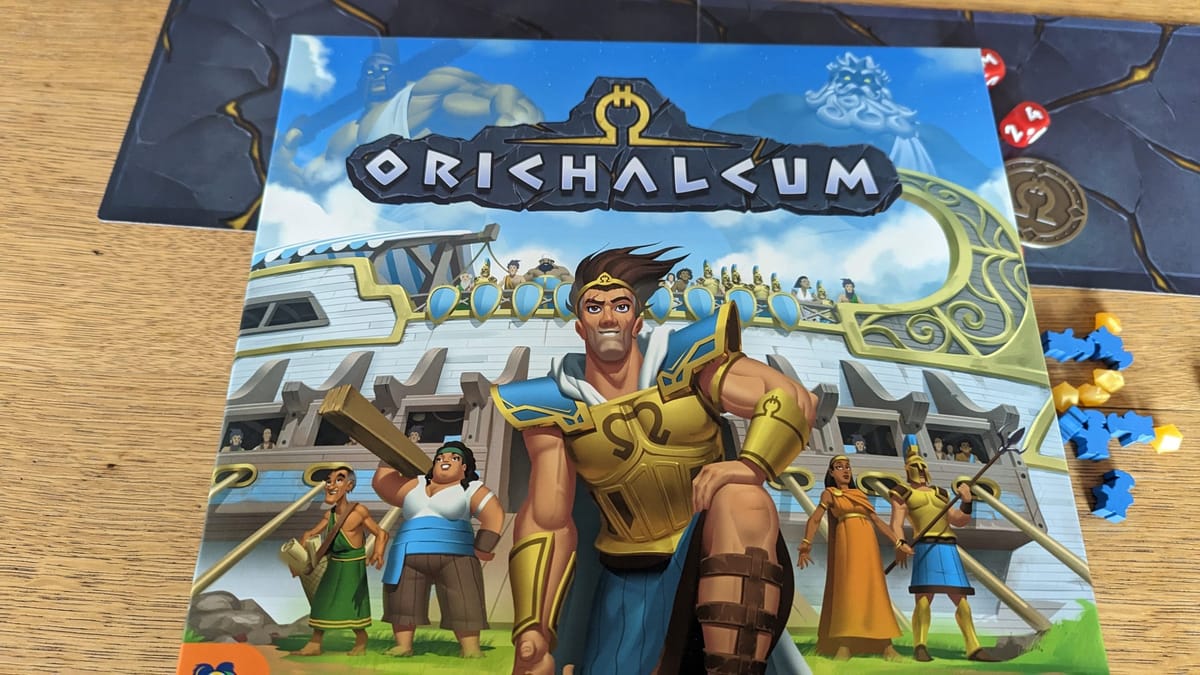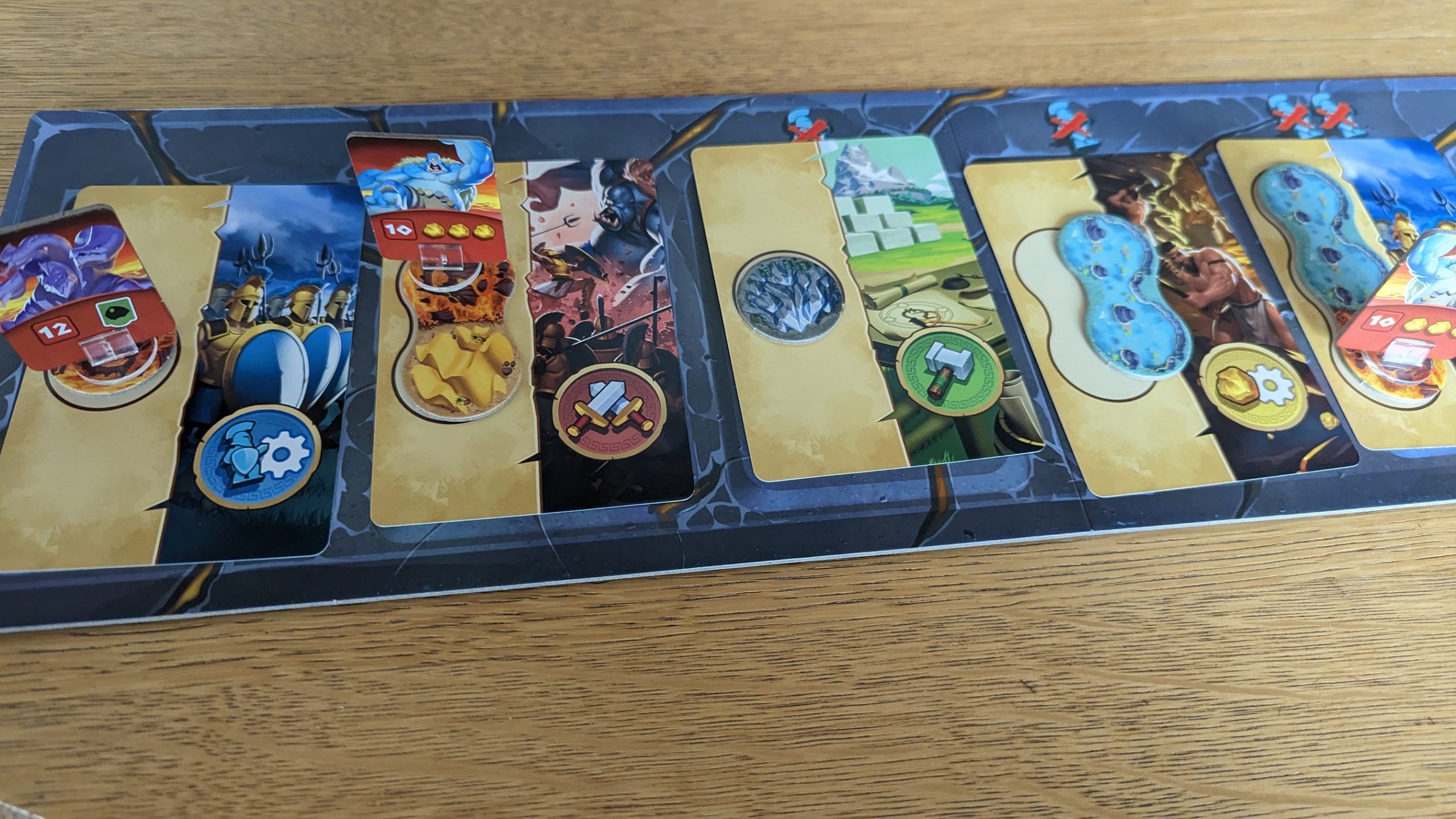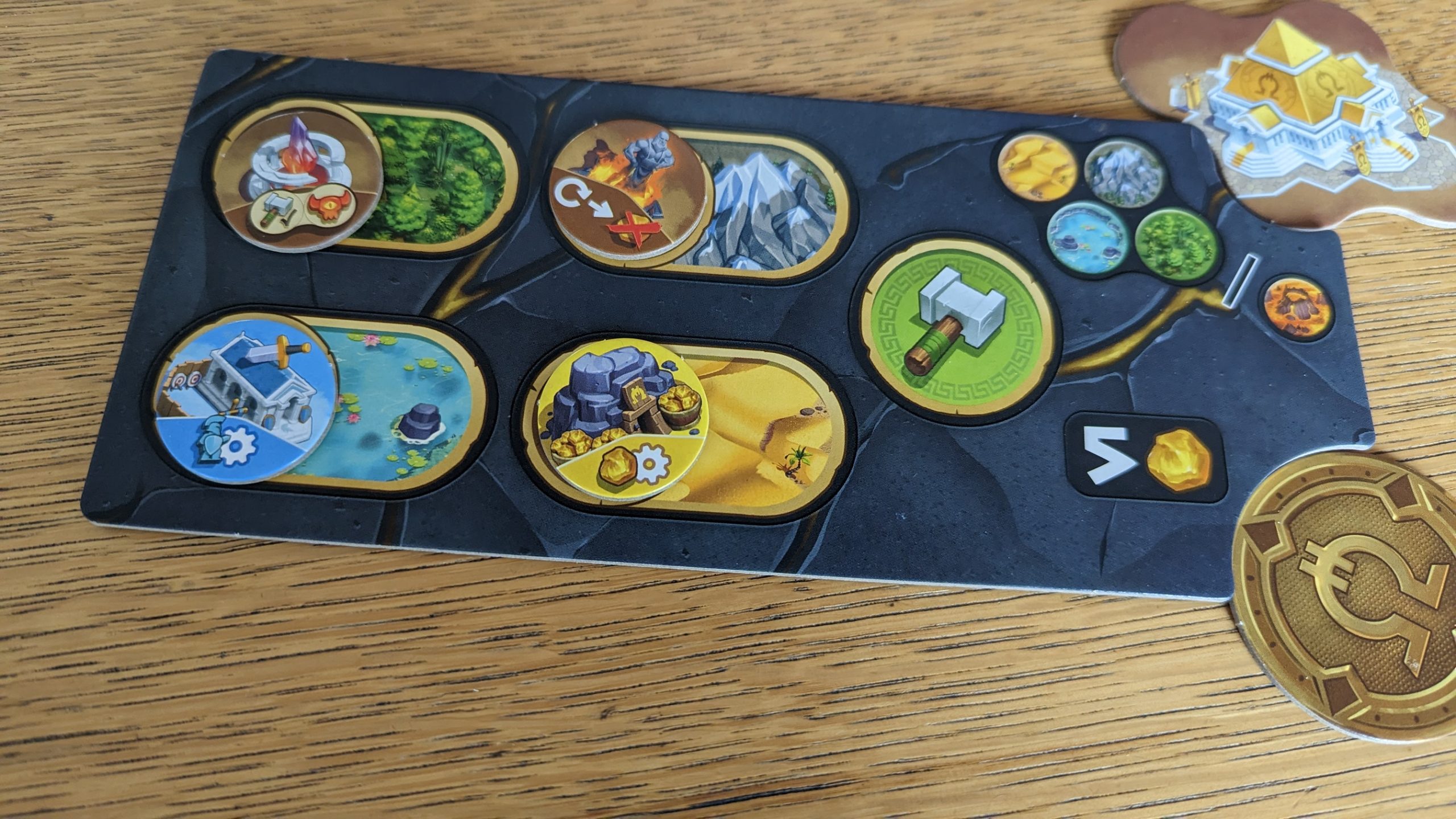
Orichalcum is a game having an identity crisis. Its production, from artwork to components, suggests that it’s a family weight game. But then you play it and see the opportunity for players who grasp the mechanics to totally embarrass those that don’t, so maybe it’s a lightweight game for hobbyists? And yet, there’s a fair amount of this game that will put off those people. It feels like it’s trying to appeal to all board gaming demographics at once, but never commits to satisfying any one enough that I honestly don’t know who it’s for.
Looking at the rulebook, Orichalcum starts off promising enough with snappy turn structure accompanied by a tight menu of actions. Any given turn consists of a player picking a card from the queue, paying the indicated cost in hoplites, and playing the connected terrain tile onto their island, along with monsters for lava segments. If doing so creates a contiguous area of three or more segments with the same terrain type, they get to nab the corresponding Titan, which will provide a one-time action boost and count as one of their five requisite victory points until someone else does the same for that titan and grabs it from them.
Afterwards, players resolve the action on the card they just bought. The simplest two are hoplites and ore production, where you just nab hoplites or ore equal to the number of like production buildings on your board. Building is almost as straightforward, there’s just more options. Every terrain type will have a random building pulled from the bag each round, along with the permanent options of building a VP temple on a kite of four different terrains and turning in five ore for a VP. The last action is fighting monsters, a cascading series of committing hoplites to nettles and chucking dice where you can wipe all the monsters off your board in a single action, provided you don’t miss. Finally, players have the option once per turn to turn in two ore, hoplites, or monsters to take an extra action, which cannot be used to produce the resource spent. After everyone’s had a turn, you enter a new round with the player who has the most hoplites taking the first turn. This process is repeated until someone hits five victory points without a monster on their island, at which point they immediately win the game.

I’m not going to lie, I was immediately excited for Orichalcum when I saw all the different directions the game pulls you in, needing to stockpile hoplites to get the all-important first turn, but also needing to spend them on on action cards, defeating monsters, and occasionally an extra action. My initial evaluation put it as a gateway game that used hoplites as a simple way to introduce crunch, and I had assumed , given the importance of hoplites, that their production building would either be static or be overwhelmingly plentiful in the building bag. Instead, their production is just as random as any other building, meaning that a good economy can easily just be a function of luck and snowballing.

Which brings me to my major critique of Orichalcum, how its mechanics work together to inevitably create “bad beat” moments that feel entirely out of players’ control. Having last pick is particularly punishing, as you can be forced into taking a card that is not only useless, such as a fight action when you have no monsters on your island, but can actively hurt you, like a strong monster when you’re already low on resources. That isn’t to say I don’t think that luck and chance don’t have their place in modern game design, they very much have their uses, from narrowing skill gaps to creating natural peaks and valleys in the play experience. Problem is, valleys should be opt-in, like you’re being punished for a risky play, or the peaks need to match. Orichalcum just doesn’t implement its chance well. There’s a plethora of tiles that have two of the same terrain adjacent, meaning a player going early in the turn order can steal an unused titan without the victim having a chance to do anything about it. Players can and will low roll and fail to kill monsters that they properly committed to, but the cascading nature of monster combat means that you’re disincentivized from under committing and getting the high roll kills to balance that out. In the end, Orichalcum simply subjects its players to too many feel-bad lows while failing to obtain highs better than “okay”.
Orichalcum
All Right
My experience with Orichalcum was ordering a pizza and getting a tomato soup with dumplings and cheese. There's the ingredients for the right stuff in this box, but somewhere along the lines the execution took a weird turn.
Pros
- Gorgeous production
- Good ideas
Cons
- Hoplites are a core resource that snowball the game
- Too much can feel out of a player's hands
- Fighting monsters is a trap
